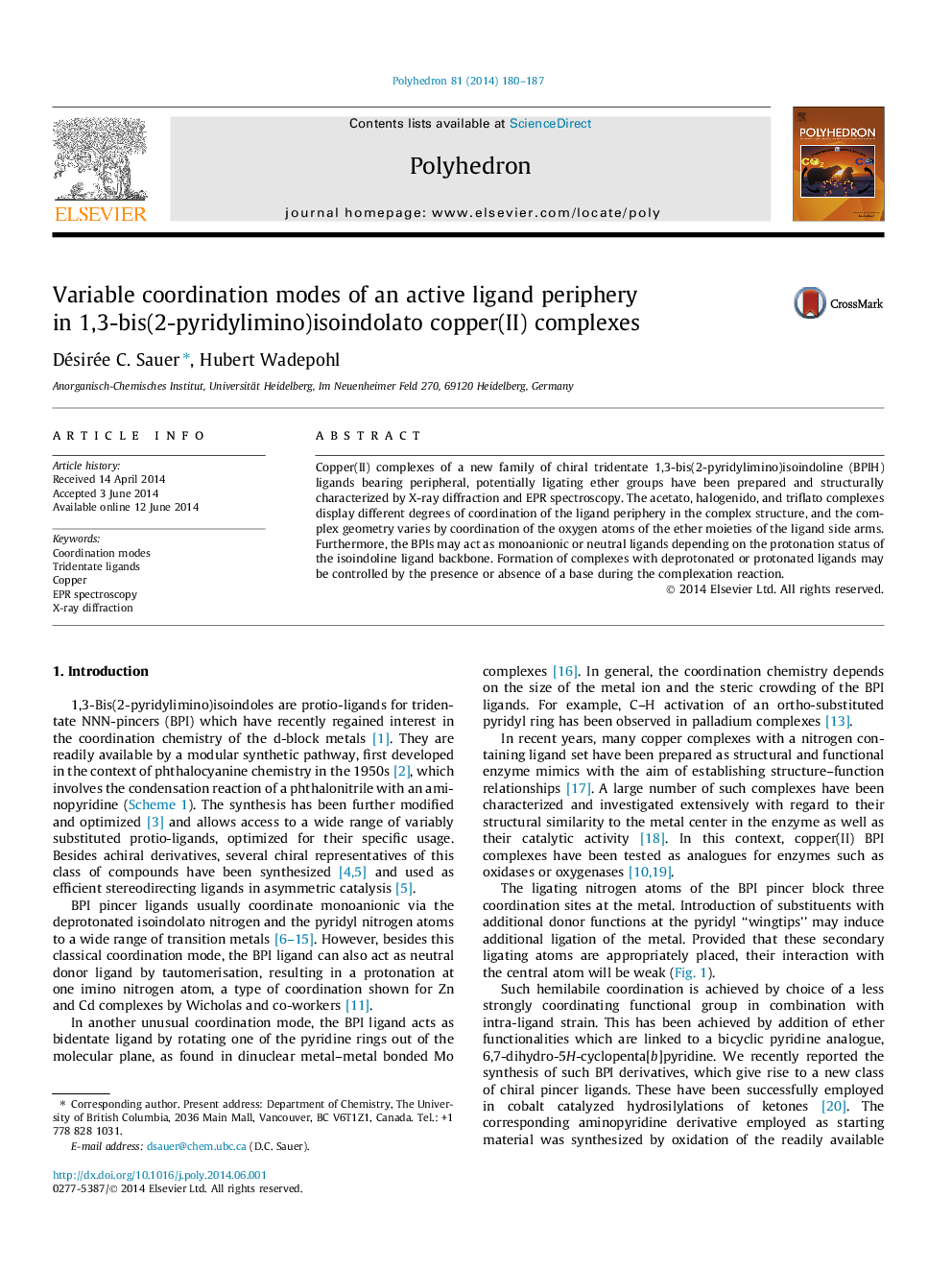| Article ID | Journal | Published Year | Pages | File Type |
|---|---|---|---|---|
| 1334418 | Polyhedron | 2014 | 8 Pages |
Copper(II) complexes of a new family of chiral tridentate 1,3-bis(2-pyridylimino)isoindoline (BPIH) ligands bearing peripheral, potentially ligating ether groups have been prepared and structurally characterized by X-ray diffraction and EPR spectroscopy. The acetato, halogenido, and triflato complexes display different degrees of coordination of the ligand periphery in the complex structure, and the complex geometry varies by coordination of the oxygen atoms of the ether moieties of the ligand side arms. Furthermore, the BPIs may act as monoanionic or neutral ligands depending on the protonation status of the isoindoline ligand backbone. Formation of complexes with deprotonated or protonated ligands may be controlled by the presence or absence of a base during the complexation reaction.
Graphical abstractThe anionic ligands X in BPI-copper complexes induce different degrees of coordination of the peripheral ether moieties in the complexation of the metal. Furthermore, the BPIs may act as monoanionic or neutral ligands depending on the protonation status in the isoindoline ligand backbone. This leads to a variety of structural motifs.Figure optionsDownload full-size imageDownload as PowerPoint slide
